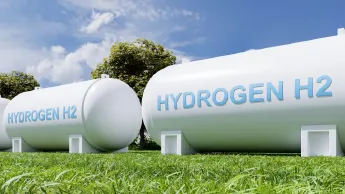Perovskite BaTaO2N: From Materials Synthesis to Solar Water Splitting

LAB TALK (RECORDING)
Language: English
Although hydrogen is a zero-emission energy carrier, its current global production still relies heavily on fossil fuels. Current unprecedented levels of momentum around renewable energy and environmental remediation are due to the rapid pace of climate change. It is widely known that the world is speeding up efforts to achieve the United Nations Sustainable Development Goals (SDGs) by 2030. One of the important SDGs is . As a replica of natural photosynthesis, a semiconductor-based artificial photosynthetic system is regarded as one of the most economically viable, highly efficient, and environmentally benign chemical processes to generate green hydrogen energy from solar water splitting. However, to harness solar energy efficiently, it is necessary to enhance the visible-light-driven photocatalytic performance of the existing materials and to discover novel visible-light-active materials.
Mixed-anion compounds offer new opportunities in this regard [1]. As a 600 nm-class photocatalyst, BaTaO2N has received particular attention due to its small bandgap (Eg = 1.8 eV), suitable band edge positions for visible-light-induced water splitting, chemical stability, and nontoxicity [2,3]. BaTaO2N is commonly synthesized by a two-step method: (i) the synthesis of a corresponding oxide precursor and (ii) its high-temperature nitridation under an NH3 atmosphere for a prolonged period. However, this two-step method leads to the formation of various defects that negatively affect the water-splitting performance. We therefore applied an NH3-assisted direct flux growth approach to reduce the defect density of BaTaO2N. We also engineered the bandgap by cation doping, and explored the effects of the altered morphology, size, and porosity on the visible-light-induced water oxidation activity and photoelectrochemical performance of BaTaO2N.
Our findings revealed that the photocatalytic activity and photoelectrochemical performance of BaTaO2N were significantly influenced by particle morphology, size, porosity, dopant type, and doping amount. In particular, the BaTaO2N crystal structures obtained by nitridation of the oxide precursor without KCl flux exhibited a higher surface area and high anodic photocurrents compared to the BaTaO2N crystal structures obtained by nitridation of the oxide precursor with KCl flux due to the high number of dangling bonds acting as nucleation centers for the highly dispersed CoOx cocatalyst nanoparticles.
